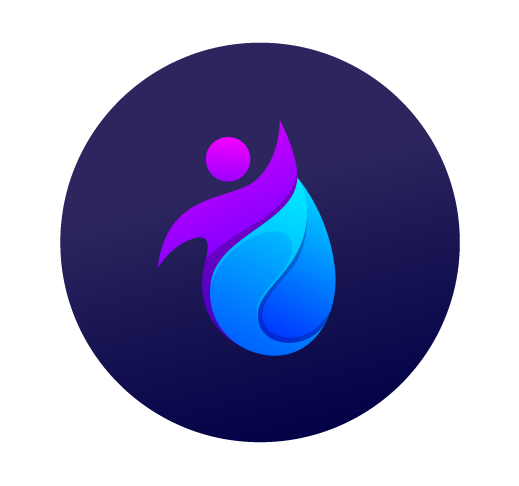Nailing the first interview is just the start—final interviews test your depth, judgment, and true fit. Navigating them well is critical for job market success.
Employers elevate the process at this stage, introducing new evaluators and advanced questions. These rounds go beyond surface-level skills, focusing on substance and readiness.
Exploring what shifts between initial screens and final interviews helps you confidently adapt, put your best foot forward, and secure offers in today’s competitive job landscape.
Recognizing the Shift Between First, Second, and Final Interviews
Expect a strategic leap in expectations: final interviews introduce higher stakes, probing motivation and cultural fit in new ways. You’ll notice more decision-makers enter the conversation.
In final interviews, surface answers won’t suffice. Employers look for self-awareness, professional vision, and the ability to align your contributions with long-term goals.
Adapting Your Communication for the Final Round
Use specific examples and advanced vocabulary to convey depth. Speak with a balance of confidence and humility, mirroring executive communication you’ve observed in the industry.
For example, replace “I handle projects well” with “I led a cross-functional team to deliver on an accelerated timeline, directly impacting our Q2 revenue goals.”
Final interviews reward communicators who answer concisely, pause thoughtfully, and directly address interviewer nuances—re-read nonverbal cues and echo key priorities back to interviewers.
Scenario: Facing Senior Leadership in Final Interviews
A candidate sits across from a mix of C-level leaders. The room is quiet—she opens with a clear, succinct elevator pitch tailored to the company’s growth stage concerns.
As questions shift to vision and impact, she connects past wins to the organization’s three-year roadmap, naming initiatives from the most recent press release.
The panel nods, engaged. Closing, she asks, “What changes would you want from someone in the first 90 days?” Take this approach: research vision, anticipate senior priorities, and reference recent company milestones.
| Interview Stage | Primary Focus | Common Participants | Key Adjustments |
|---|---|---|---|
| First Interview | Qualifications, resume basics | HR, recruiter | Highlight skills, review job research |
| Second Interview | Problem-solving, motivation | Team manager, peer | Share detailed stories, demonstrate collaboration |
| Final Interview | Culture fit, decision-making | Executives, founders | Prepare strategic questions, discuss long-term goals |
| Panel Interview | Consensus building | Panel of mixed roles | Engage all, balance viewpoints, summarize takeaways |
| Offer Stage | Compensation, negotiation | HR, hiring manager | Research salary, clarify expectations, negotiate |
Sharpening Advanced Research and Personalization
Stepping into final interviews, deepen your research. Personalizing your stories and questions signals genuine intent and separates you from other top contenders.
Identify recent leadership messaging, strategic shifts, financial updates, and newsworthy projects. Reference these in your final interviews to demonstrate industry awareness and investment in the role.
Targeting Leadership Concerns with Tailored Insights
Leaders in final interviews expect you to understand their pain points. Highlight ways your background addresses current challenges, weaving their language into your responses.
For example, mention how your last project improved NPS if the company’s recent annual report emphasizes customer loyalty.
- Study recent press releases: Demonstrates you’re current on company events; use to tailor questions about future growth.
- Analyze annual reports: Reveals priority projects and pressure points; reference findings when discussing how you can add value.
- Find executive interviews: Offers leadership priorities and soft skills; cite these themes when describing your long-term fit.
- Audit company social media: Reveals tone and culture; comment on initiatives to show alignment.
- Monitor competitors: Highlights industry trends; position yourself as someone ready to address external threats and opportunities.
Bringing in actual metrics or references in final interviews doesn’t mean memorizing facts, but drawing relevant links between your achievements and company targets.
Prepping Role-Specific Impact Stories
Curate three to four impact stories tied to the job’s updated needs. Use language from the job description, emphasizing data and outcomes relevant to final interviews.
Include how you responded to changes, overcame setbacks, or led teams through ambiguity to results—directly correlating your approach to current company challenges.
- Create a story list: Focus stories on problems you solved and impacts you made, not general tasks.
- Align with priorities: Tailor each narrative to company goals cited in recent materials.
- Include role keywords: Integrate terminology from the job ad, subtly reinforcing your fit.
- Add measurable metrics: Cite percentage gains, cost cuts, or customer satisfaction scores where possible.
- Practice variations: Prepare a one-minute and a three-minute version for each scenario.
Practicing the delivery and transitions between stories helps you sound natural while still targeting final interviews’ need for authenticity and depth.
Elevating Your Professional Brand in Final Interviews
Final interviews give you the platform to reinforce your professional brand. Use this final opportunity to clarify what differentiates you from others with similar qualifications.
Think of your brand as a shorthand for your reputation. It’s the message senior stakeholders repeat after the conversation ends.
Carrying Consistency Across Stages
Consistency matters: signal the same core values, communication style, and decision logic in every encounter. Leaders spot inconsistencies during final interviews, so prepare for follow-up questions.
If you discussed teamwork earlier, show new, deeper teamwork stories now—expanding with tactical, quantifiable results relevant to this company.
Use language such as, “Throughout this process, I kept returning to how your team values…” then build a statement around a consistent theme. This strengthens your brand and memory in final interviews.
Scenario: Showcasing Values Through an Interview Answer
“When mentoring new hires, I prioritize open communication and feedback. At my last company, this improved onboarding scores by 12%.”
This pairing of values plus tangible results signals alignment. Practicing these micro narratives will help you stand out in final interviews.
Combine gestures, confident but comfortable body posture, and purposeful silence to reinforce trustworthiness and authenticity at this critical stage.
Navigating Behavioral and Case Questions Successfully
Final interviews challenge you with behavioral scenarios and live problem-solving to assess decision-making and adaptability. Prepare with formulaic, yet personalized, answer structures.
Practice the STAR method: Situation, Task, Action, Result. For final interviews, add reflection about what you’d do differently or what you learned.
Handling a Behavioral Question with Precision
Consider the prompt: “Describe a conflict with a coworker.” Start with context and escalate to actions and success, ending with how you’d improve next time.
“My colleague and I disagreed on priorities, so I initiated a structured discussion, leading to aligned milestones. In hindsight, I’d involve the wider team earlier.”
Add nuance by referencing the company’s specific team structure or communication expectations. This customization impresses final interviews decision-makers seeking strong fit.
Excelling with Business Case Questions
Case questions in final interviews measure your logic, industry knowledge, and calm under pressure. Start by clarifying the problem out loud and structuring your thoughts on paper if allowed.
Walk through your assumptions, saying, “I’m considering three customer segments based on your latest earnings call.”
Finish your recommendation with actual business impact: “By focusing marketing on Segment A, my plan could drive a 5% lift in quarterly sales based on industry benchmarks.”
Proactively Managing Nerves and Panel Dynamics
Final interviews bring more faces, sometimes all at once. Managing nerves and juggling perspectives is a real skill in these situations.
Ground yourself with intentional breathing, steady eye contact, and momentary pauses—small behaviors build composure for final interviews, even under group pressure.
Coordinating Your Responses in Panel Situations
Maintain rapport by shifting your gaze among all panelists, not just the question-asker. Address by name when possible and incorporate everyone’s feedback succinctly.
Jot quick notes during multi-pronged questions to structure fuller responses, while returning to unanswered points if someone gets interrupted or changes topic.
End with a group-facing summary to confirm alignment: “To recap, these are my main action steps for that scenario…” This helps final interviews conclude on your terms—not theirs.
Staying Grounded Amid High Stakes
Analogize the moment to balancing on a surfboard: small, controlled shifts in posture keep you balanced as new waves—unexpected questions— hit during final interviews.
Instead of fidgeting, plant your feet, breathe slowly by counting to four, then answer. This measured approach demonstrates confidence, maturity, and adaptability to senior interviewers.
Mentally rehearse your introduction and exit lines for a calm open and close. Feel free to briefly acknowledge nerves (“I’m excited for this conversation”) before redirecting focus to your preparation.
Cementing Your Candidacy with Well-Researched Questions
Final interviews are two-way: you must bring strategic, company-specific questions. These queries signal true commitment and strategic thinking, moving the conversation from candidate to partner.
Design your questions to test your understanding of the business while also discovering if their culture suits you. Use phrasing like, “Based on where the company is headed…”
Showing Strategic Insight with Follow-up Questions
Reference industry-specific trends: “I noticed your team expanded remote work placements this year. How have those adaptations influenced team culture?”
Ask process-oriented questions grounded in their language: “From the leadership updates, what’s your top priority for a new hire’s impact within the first six months?”
For final interviews, retirees stick to examples and insights that map directly to financial, customer, or internal operational outcomes. Be as granular as possible in both content and tone.
Probing Culture and Pain Points with Precision
Pose culture-focused questions rooted in observable facts, not guesswork: “I saw your involvement in the community initiative on LinkedIn. How does this shape team engagement?”
For pain points: “In your last quarterly update, customer churn increased. What approaches are you considering, and what skills would help address that?”
Each question should show your preparation while also gathering vital decision-making information.
Final Thoughts for Securing Success in Final Interviews
Final interviews are your springboard. Set yourself apart by personalizing stories, referencing current strategy, and demonstrating leadership-caliber composure and curiosity.
Preparation goes beyond memorizing stories—it means adapting to the company’s evolving tone from initial screen to last handshake, always growing in specificity and professionalism.
Carry your learning forward. Each final interview teaches skills for the wider job market, sharpening your ability to connect, impress, and secure the best roles with poise and purpose.



